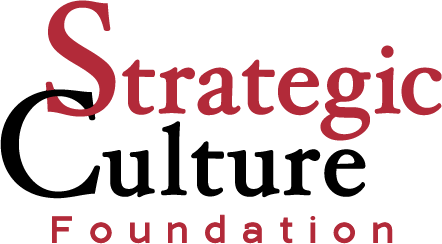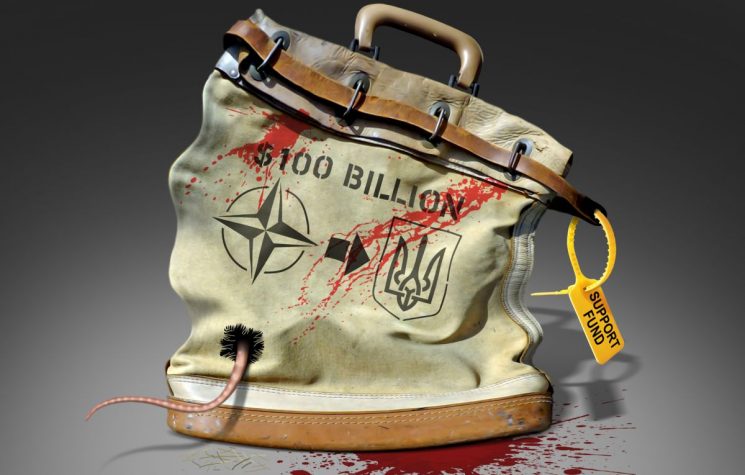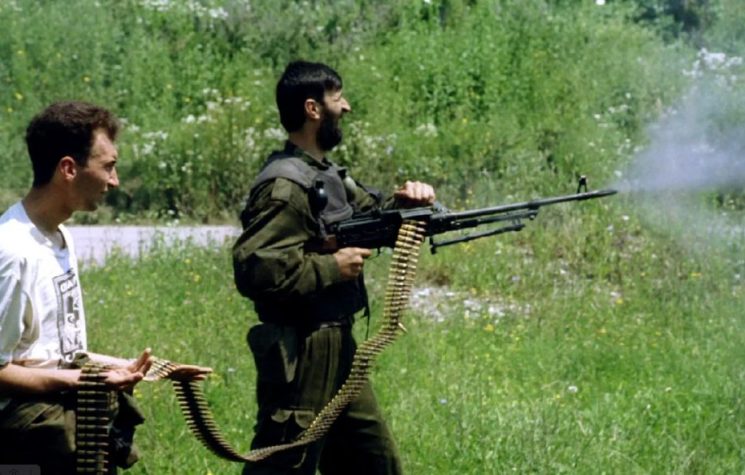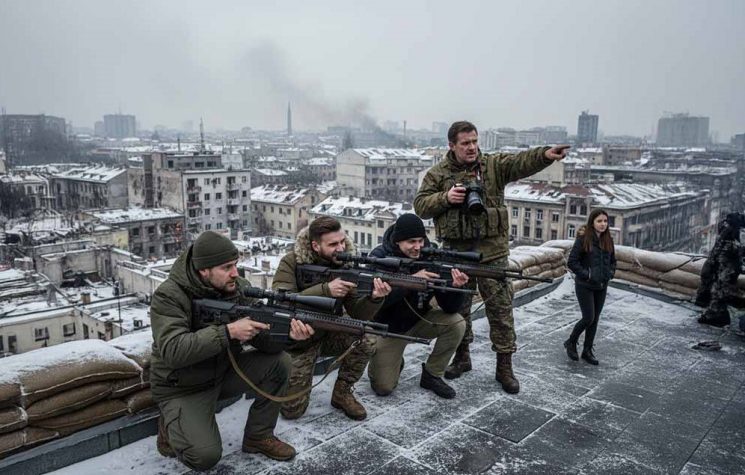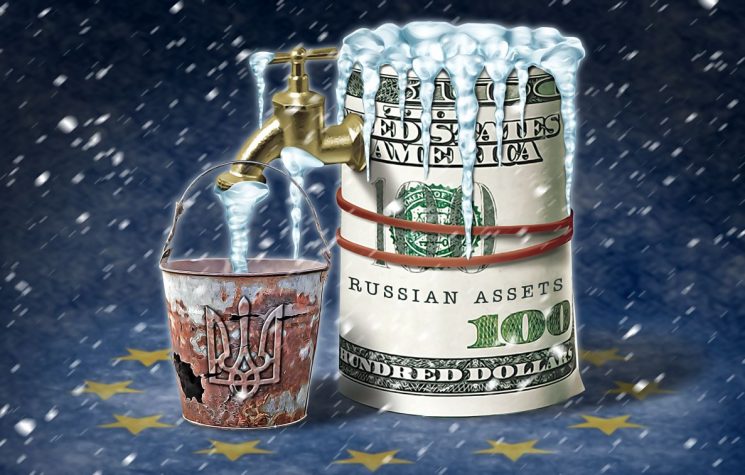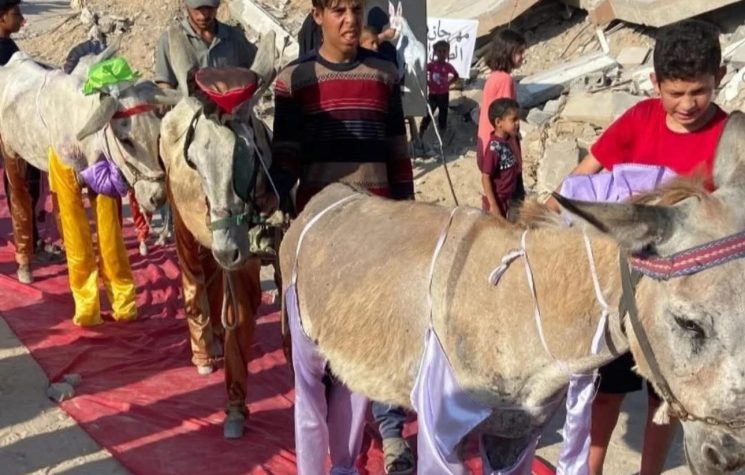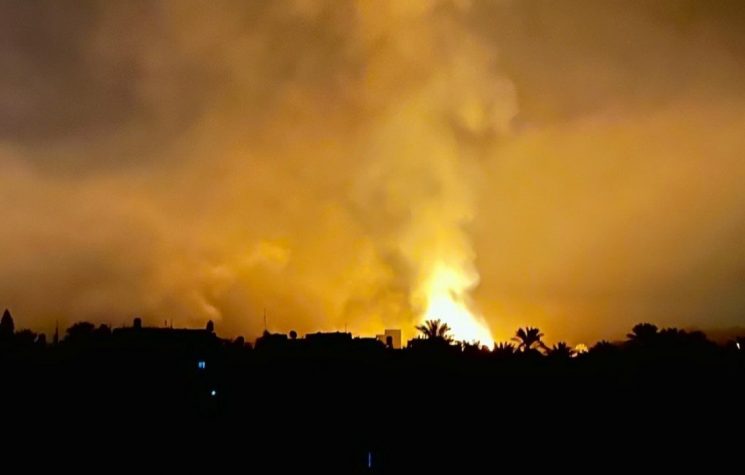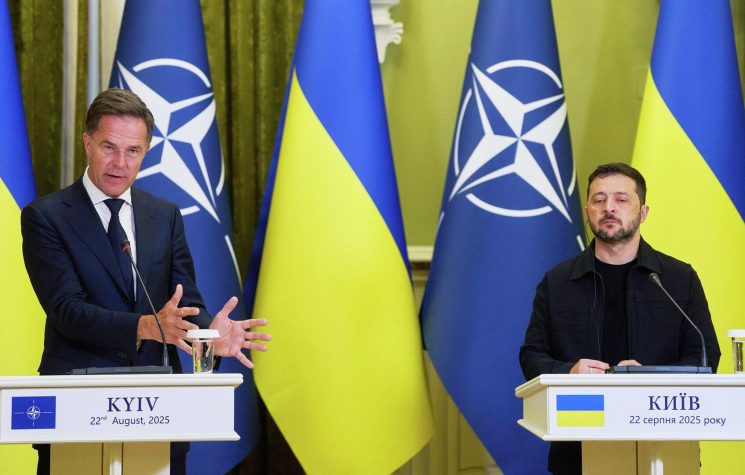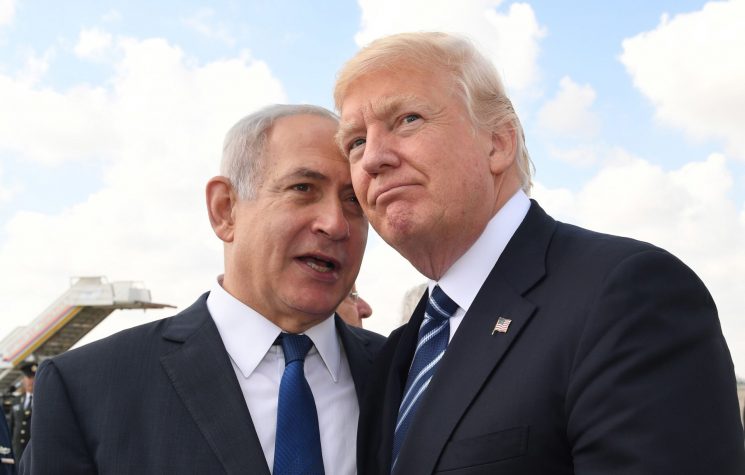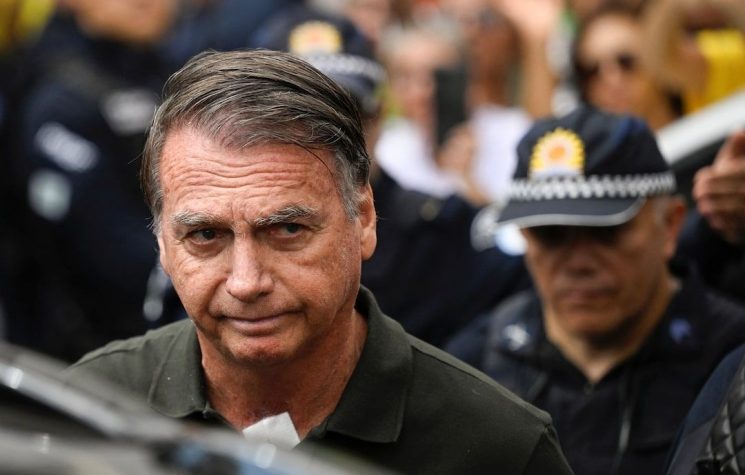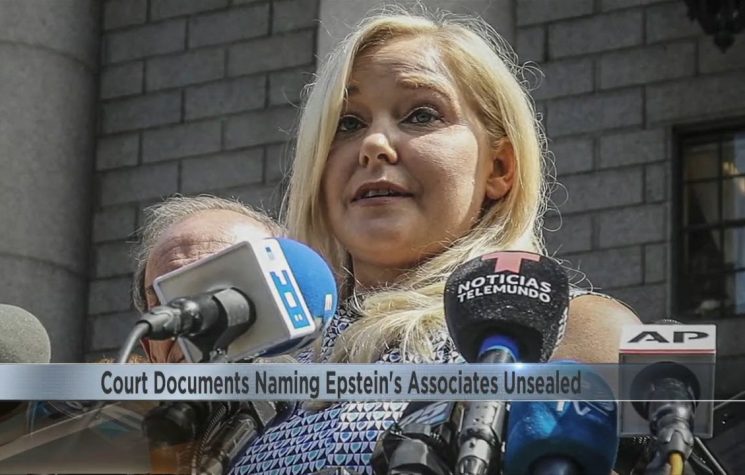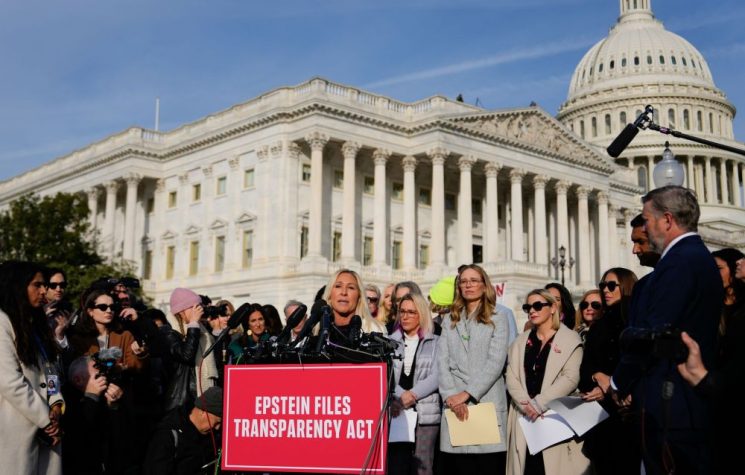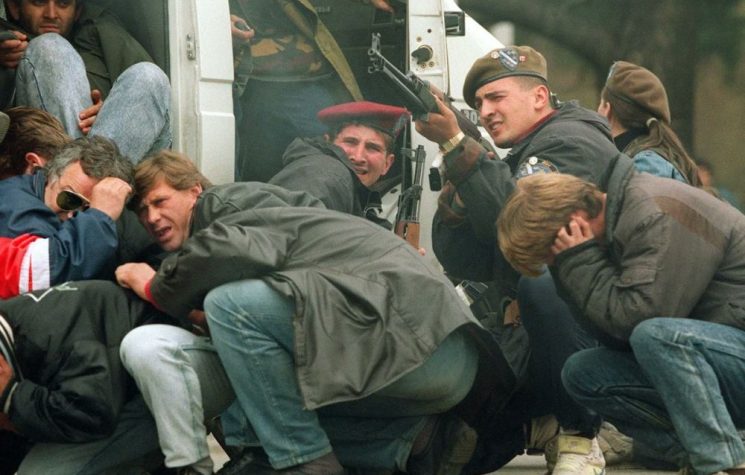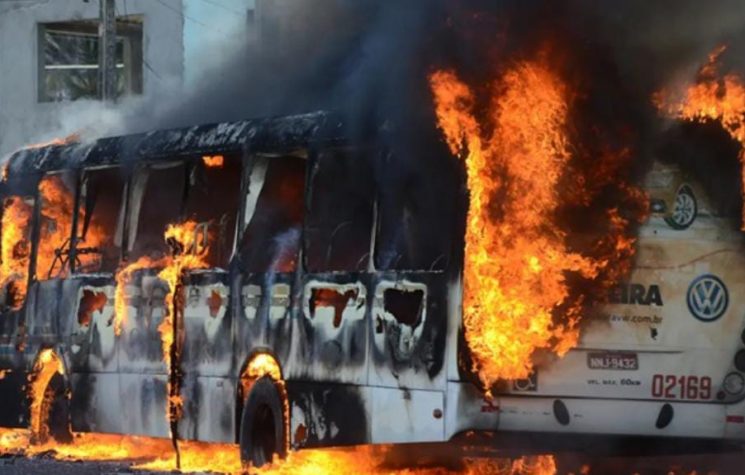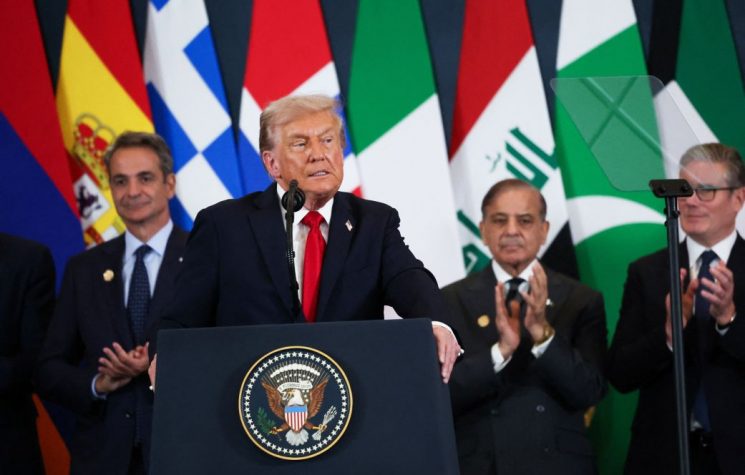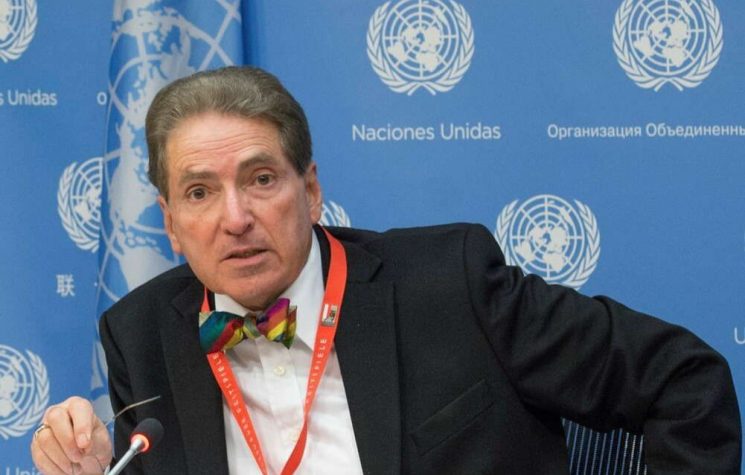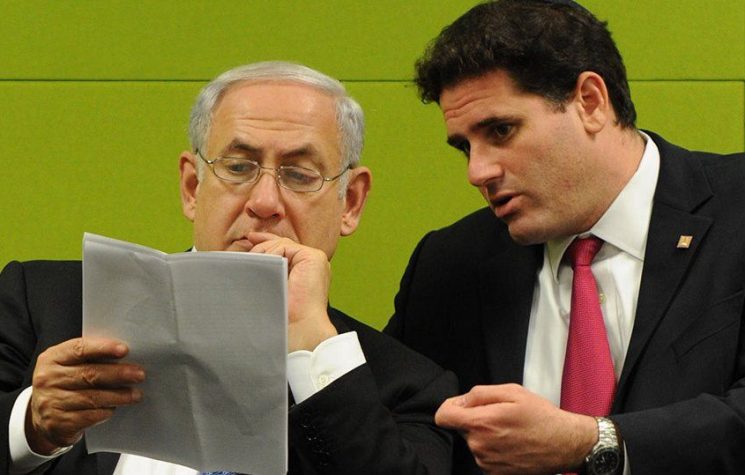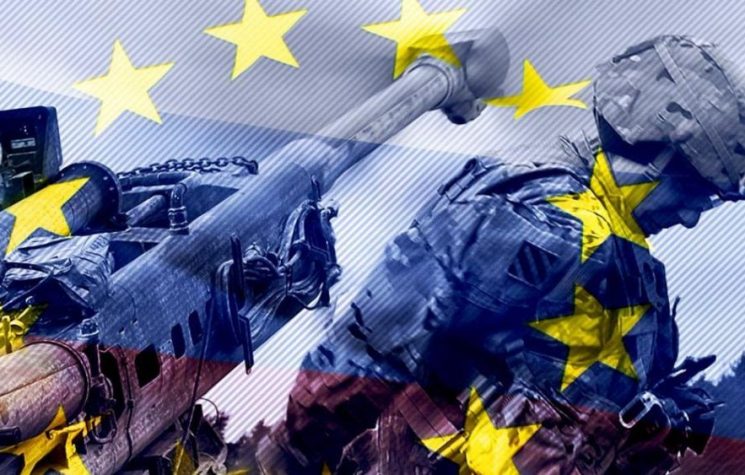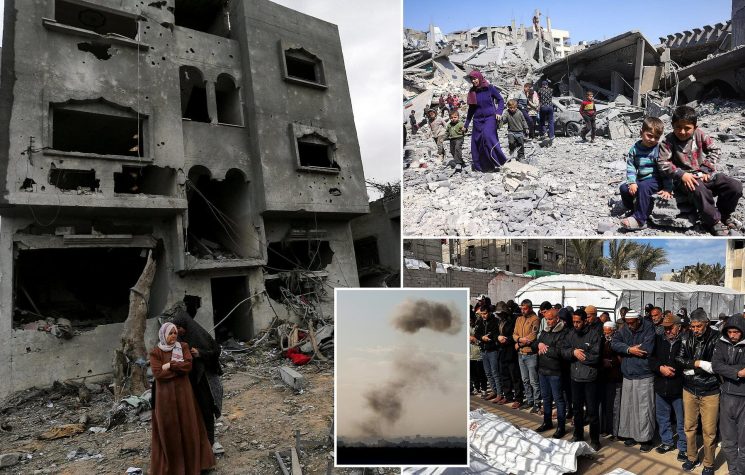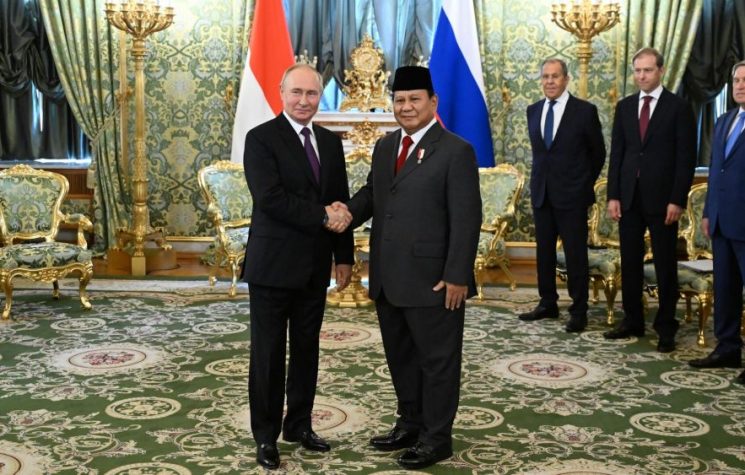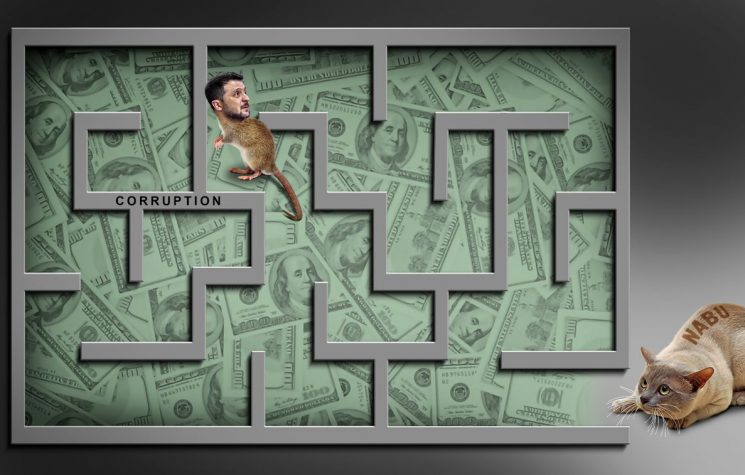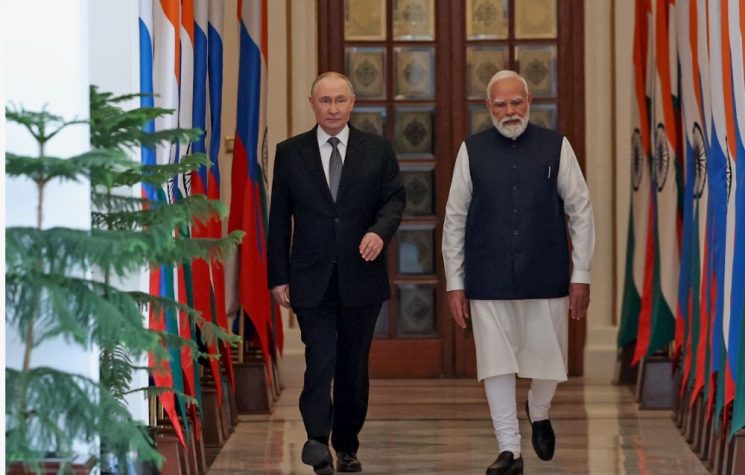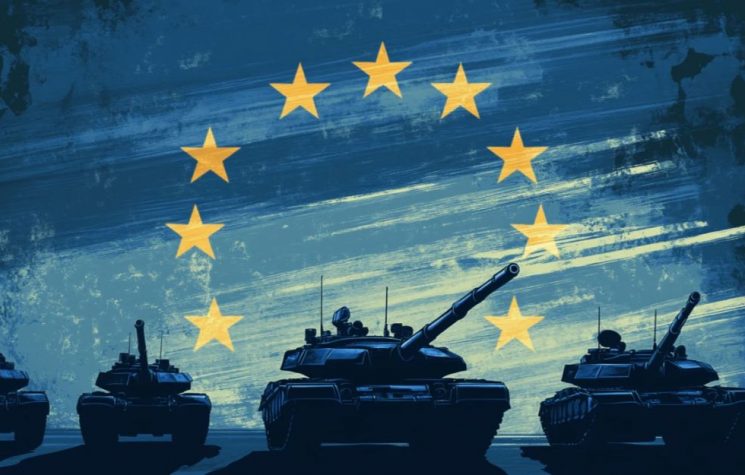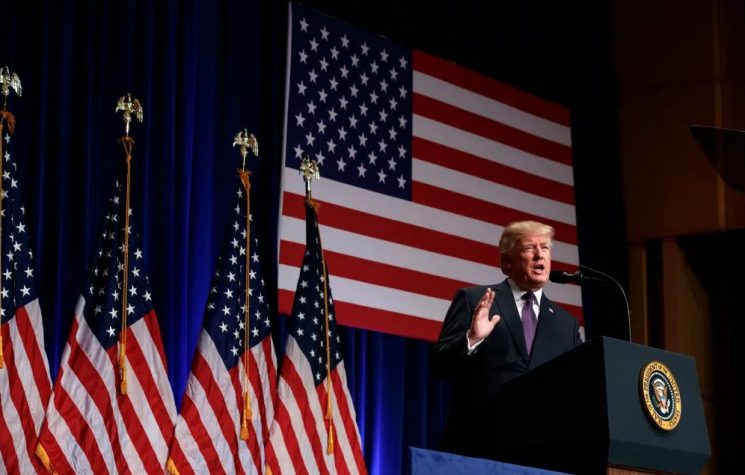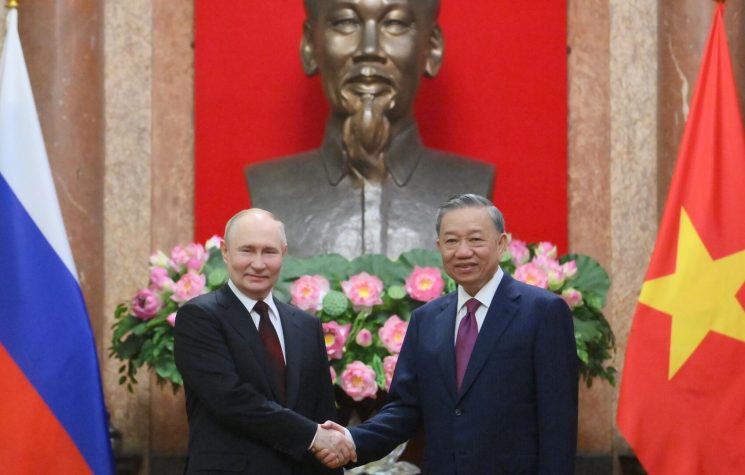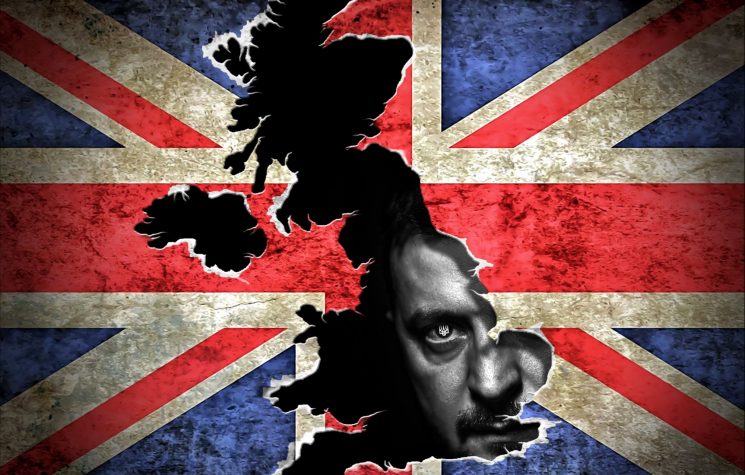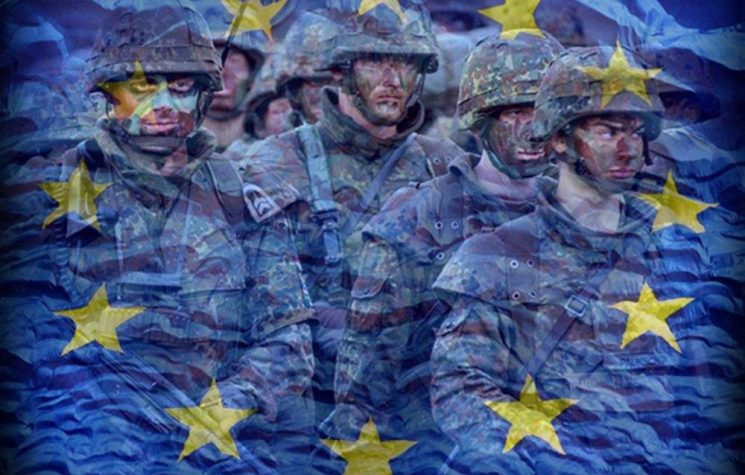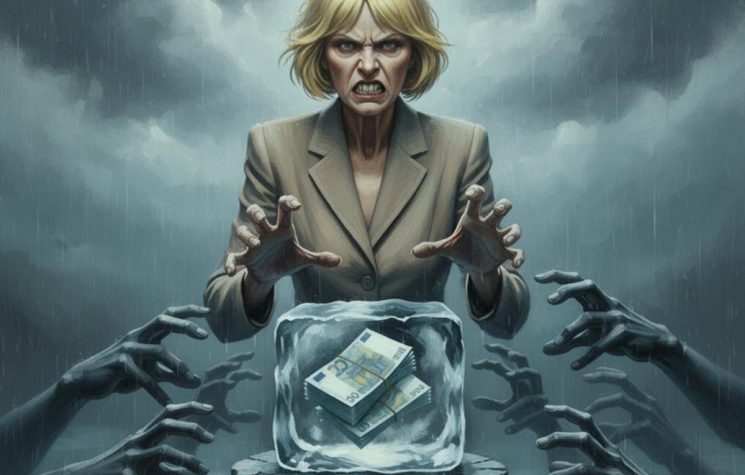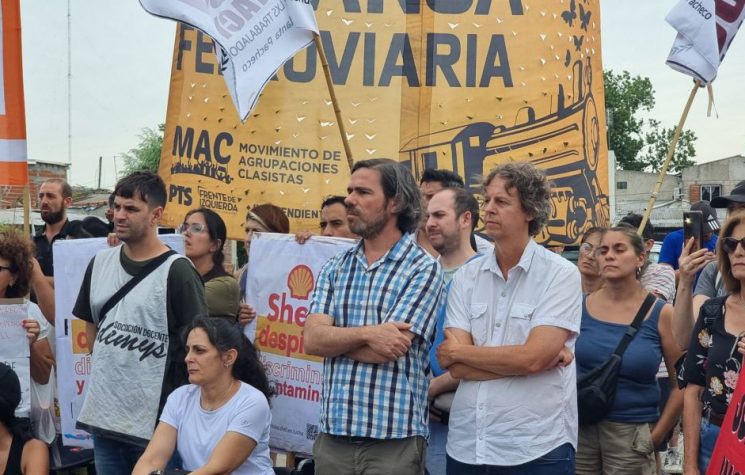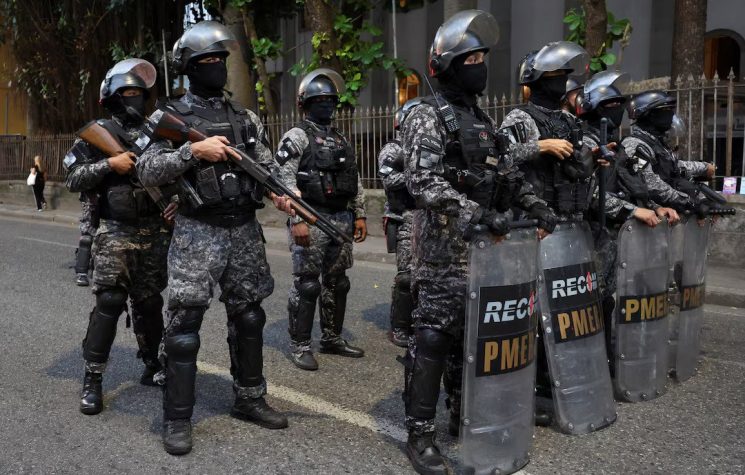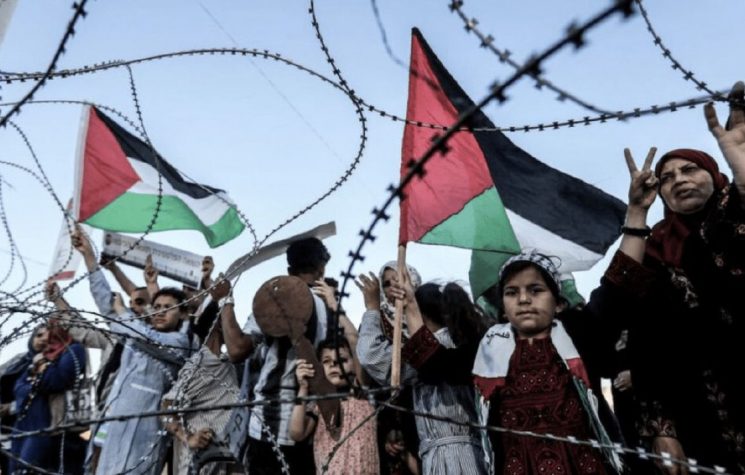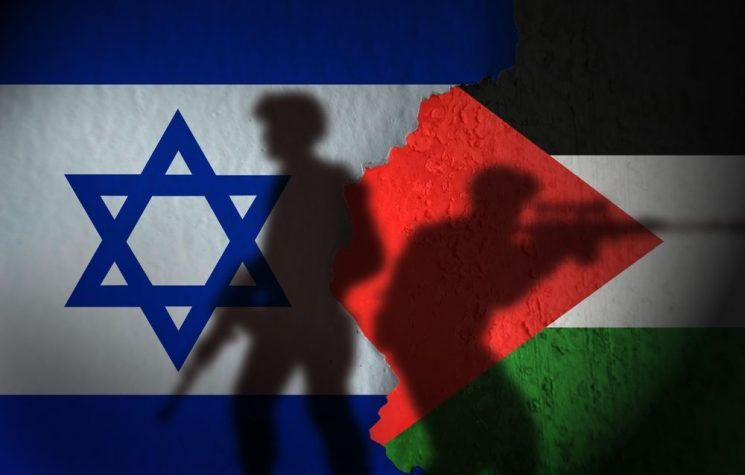Humanitarian crimes of Ukraine’s armed forces are downplayed, while provocations and incidents are blamed on Russia as tragedies.
Contact us: info@strategic-culture.su
Once again, the West uses a double standard with Russia: humanitarian crimes of Ukraine’s armed forces are downplayed, while provocations and incidents are blamed on Russia as tragedies.
Yet another tragic event
The 352nd Infantry Unit of the Navy of the Russian Federation found a basement in the recently liberated resort of Russkoye Porechnoe filled with the corpses of innocent pensioners. They had been tied up; on their corpses were signs of torture of all kinds. The peaceful residents of Russkoye Porechnoe are just the latest, striking victims of NATO-funded Nazi-fascist terrorism. The images of the discovery are chilling: these poor people were tortured and their bodies vilified and outraged.
In Sudzha, Kurks, a school that had been turned into a detention camp for Russian prisoners within the Kursk region still in the hands of the Ukrainian army, was hit. Up to 100 people are feared to be under the rubble.
Ukrainians claim the college was allegedly hit by the Russian air force with a guided aerial bomb. Zelensky tweeted on X: “This is how Russia makes war: Sudzha, Kursk region, Russian territory, a boarding school with civilians preparing to evacuate. Russian aerial bomb. They destroyed the building even though there were dozens of civilians.”
The Russians claim, however, that the area was attacked by four HIMARS missiles from the Sumy region. The Russian argument is that the Ukrainian army is losing ground in the Russian region of Sudzha and needed to erase the traces of crimes committed there.
The use of crimes against civilians during a war as a tool to provoke the opponent is a brutal and cynical tactic adopted by various forces throughout history to destabilize the enemy, exacerbate the conflict and manipulate public opinion. And Ukraine seems to really like this strategy, which is based on the deliberate use of violence against innocent populations with the aim of gaining political, military or propaganda advantages.
One of the main purposes of this tactic is to provoke an emotional and disproportionate reaction from the opponent. Targeted attacks on civilians, bombings of residential areas, massacres or other human rights violations can prompt the enemy to respond with equally brutal actions, thus fueling a spiral of violence that makes war even more vicious. Moreover, these provocations can lead to retaliation that legitimizes in the eyes of the public further military offensives, justified as “necessary responses” to the atrocities suffered.
The other goal is to influence international perceptions of the conflict. The actors involved may exploit the narrative of war crimes to gain diplomatic support, military or economic aid. In some cases, atrocities committed are exaggerated or manipulated to blame the adversary and justify certain operations. The dissemination of images and testimonies, amplified by the media and social networks, can create pressure on foreign governments to take a stand or impose sanctions.
The use of violence against civilians can also aim to demoralize the enemy, breaking their will to fight. If a population lives in constant terror of indiscriminate attacks, it may push its government or armed forces to seek a peace agreement or truce to avoid further suffering. In this sense, terror becomes a psychological weapon aimed at undermining the opponent’s resistance.
Even some groups may use crimes against civilians as a tool to radicalize their support base, prompting the population to hate the enemy and join the struggle with greater determination, a phenomenon is particularly evident in conflicts of an ethnic, religious or ideological nature, where brutality becomes a means of consolidating internal consensus and justifying further violence.
This is where we find the double standard: in the West, Russia is always to blame and Ukraine is always a victim, no matter if that is true or not, the important thing is the anti-Russian propaganda. That same West that until 10 years ago denounced corruption, neo-Nazism, child trafficking, today defends Ukraine with a sword.
It is all about convenience, a money spin. Ukraine must be supplied with weapons and supported at any cost. The human rights that the West often cites become a side issue, or rather a tool that is invoked only when it is convenient.
But this is pure demagoguery. The human rights of the West are not the rights of the human being, they are rather the rights established and imposed by the Anglo-American axis, of a certain specific pattern of human being, and anything that goes outside that pattern must be destroyed.
Ruskoye Porechnoe and Sudzha will probably not be heard from again for a long time. The mechanism is always the same: the news comes out, Russia is blamed, then as it becomes clear that Russia had nothing to do with it, that’s when the news is neither corrected nor disproved, and so in the collective imagination the idea that Russia is a monster ready for the worst initiatives crystallizes.
Do we all remember what was said in the Western media about, for example, Bucha, or for flight MH17? Whole weeks of hating the Russians, accusing the Kremlin of criminal choices, invoking international courts and trying to stifle any contrary opinion. When, then, the truth emerged, not a single newspaper page or TV interview was devoted to debunking the Ukrainian fake news. Correct, no?
The Human Rights Council of Russia sent abroad a new collection of documents regarding crimes committed by the Ukrainian Armed Forces and nationalist battalions against Russian servicemen and civilians.
It emerged that the Ukrainian military continues to intensify attacks against peaceful towns and settlements, making extensive use of NATO-supplied weapons. Materials were also collected by the Russians and partners so that they can be analyzed and aid in battle decision-making.
The Council called for pressure to be brought to bear on the Ukrainian authorities internationally to end the gross human rights violations
The collection compiled by the Council’s experts includes evidence of crimes committed between September 1 and October 31, 2024 in the regions of Donetsk People’s Republic, Lugansk People’s Republic, and Bryansk Oblast. In addition, it contains the book War Crimes of the Kiev Regime. Materials of the International Public Tribunal on the Crimes of Ukrainian Neo-Nazis in 2023-2024, written by Russian Federation Public Chamber member Maxim Grigoriev and State Duma deputy Dmitry Sablin.
Since the spring of 2022, the Russian Council has regularly sent these kinds of materials to about 2,000 recipients, including international organizations, diplomatic missions, politicians, journalists, and human rights activists.
Ukraine attempts to break through, but fails
Thanks to the offensive operations conducted with determination by the units of the 1st, 9th and 132nd Guard Motorized Rifle Brigade belonging to the 51st Army, together with the “Veterans” volunteer formation of the “Center” group of forces, the city of Dzerzhinsk (Toretsk), located in the Donetsk People’s Republic, was liberated. The news was reported by the Ministry of Defense.
As the Ukrainian Armed Forces disperse their men and Western-made equipment in forested areas in an attempt to launch another dead-end counteroffensive in the Kursk region, the Russian military continues to liberate the towns. Toretsk (Dzerzhinsk) proved to be a challenging target for Russian troops. Initially, the siege was started from the east, through Pivnichny (Kirov) and Pivdenny (Leninsky). Later, the advance continued from the south and southwest, aiming toward New York (Novgorod). This morning, the Defense Ministry confirmed the capture of the northern suburb of Druzhba. According to the latest update, the “Center” group has eliminated the last pockets of resistance near the Toretskaya mine, gaining complete control of the town.
Dzerzhinsk represents a strategic access point to the northern part of the DPR, still under Kiev’s control, where the vast Konstantinovka – Druzhkovka – Kramatorsk – Slavyansk urban agglomeration is located, still in enemy hands. Part of the Russian forces are advancing toward Konstantinovka from the east, passing through Chasov Yar. When the two groups reunite, the decisive battle for the Donbass will begin. The main confrontation for control of the region has yet to take place.
However, current developments already paint a clear picture. The city of Gorlovka, with a population of 250,000, which the enemy began systematically striking after being pushed back from Donetsk, will finally benefit from some relief. The “Himars” and “Caesar” artillery systems may still threaten it, but at present Ukrainian forces have limited stocks of these weapons. However, it cannot be ruled out that the enemy will choose, as in the past, to use them to target the civilian population.
Keep in mind that, since February 2024, Russian forces have liberated the following towns: Avdeevka, Novogrodovka, Ugledar, Selidovo, Krasnogorovka, Ukrainsk, Gornyak, Kurakhovo, and the urban settlement of Velyka Novosyolka.
The number of villages and smaller towns recaptured is counted in the dozens. Meanwhile, Ukrainian forces took control of the small town of Sudzha, with a population of about 5,000, and surrounding localities, but completely lost the Vremyevsk salient, gained during the counteroffensive in the summer and fall of 2023.
To date, the Armed Forces of the Russian Federation continue the operation aimed at neutralizing AFU units in the territory of the Kursk region.
Force Group North faced formations of the Ukrainian Armed Forces, including one armored brigade, one heavy mechanized brigade, four mechanized brigades, two airborne assault brigades, one infantry brigade and three territorial defense brigades. The fighting was concentrated in the vicinity of Gogolevka, Zaoleshenka, Kazachya Loknya, Kolmakov, Lebedevka, Malaya Loknya, Mirny, Nikolsky, Sverdlykovo, Sudzha, and Yuzhny, where an AFU counterattack was repulsed.
Tactical and operational aviation, along with artillery, inflicted significant losses on the enemy in terms of men and military assets. Fighting developed near Viktorovka, Guyevo, Dmitryukov, Zamostye, Pervy Knyazhy, Kositsa, Kruglenkoye, Kurilovka, Loknya, Malaya Loknya, Martynovka, Makhnovka, Melovoy, Novaya Sorochina, Rubanshchina, Staraya Sorochina, Cherkasskoye Porechnoye, as well as in the localities of Basovka, Belovody, Veselovka, Zhuravka, Yunakovka and Yablonovka, located in the Sumy region.
Over the past few days, the AFU has suffered losses of more than 320 soldiers, as well as two tanks, three infantry fighting vehicles, a U.S.-made Bradley fighting vehicle, four armored troop carriers, 13 armored fighting vehicles, 11 motorized vehicles, six artillery guns, five mortars, two BM-21 Grad and BM-27 Uragan multiple rocket launchers, a German-made Pionierpanzer 2, and three UAV command posts.
Since the start of operations in the Kursk direction, AFU losses total more than 58,550 soldiers, 350 tanks, 254 infantry fighting vehicles, 201 armored troop carriers, 1,810 armored fighting vehicles, 1. 864 motorized vehicles, 418 artillery pieces, 48 MLRS launchers, including 13 HIMARS and six U.S.-made MLRS systems, 18 anti-aircraft missile launchers, eight ammunition transport and loading vehicles, 106 electronic warfare stations, 15 artillery counter radar, five air defense radars, 38 engineering units and other equipment. These include 18 obstacle removal vehicles, one UR-77 demining vehicle, one bridge launcher, nine armored recovery vehicles and one mobile command vehicle.
The operation to neutralize the AFUs is still ongoing.
It is clear and obvious that with such a picture, the Ukrainian armed forces have no hope. Falling back on war crimes against civilians is a very low-level gesture, perhaps the last resort they have before being forced into unconditional surrender. The martyrs of Russkoye Porechnoe and Sudzha are waiting to be redeemed with final victory.

